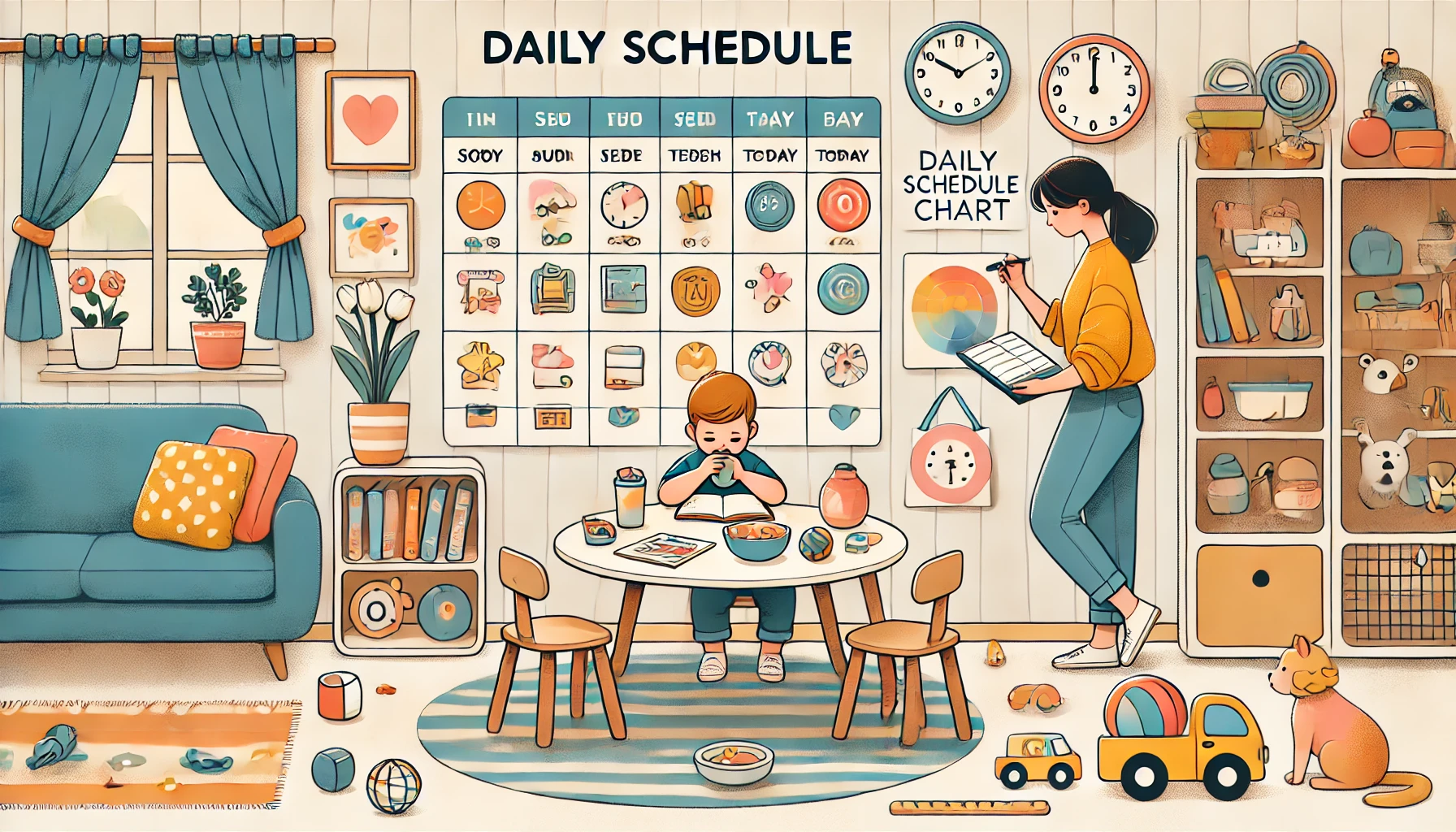A well-structured daily schedule helps children feel secure, develop good habits, and balance learning with play. While flexibility is essential, having a predictable routine ensures that kids stay engaged and productive throughout the day. In this article, we’ll explore how to create a fun and effective daily activity schedule for children at home.
Why a Daily Schedule is Important for Kids
Promotes a sense of security – Knowing what to expect each day helps children feel safe and in control.
Encourages independence – A routine teaches kids how to manage time and responsibilities.
Balances learning and fun – Helps children stay engaged while ensuring they get enough rest and playtime.
Reduces stress and tantrums – Predictability makes transitions between activities smoother.
Now, let’s explore how to create a structured yet flexible schedule that keeps kids happy and engaged!
1. Start with a Morning Routine
Mornings set the tone for the entire day. A positive and structured start helps kids wake up feeling refreshed and ready to learn.
Example Morning Routine:
- 7:00 AM – Wake up and get dressed
- 7:30 AM – Breakfast
- 8:00 AM – Brush teeth and personal hygiene
- 8:30 AM – Free play or light exercise
- 9:00 AM – Learning time (reading, writing, or educational activities)
What Kids Learn:
- Self-care and hygiene
- Time management
- Focus and responsibility
2. Include Educational Activities
Learning at home doesn’t have to feel like school! Make educational time interactive and enjoyable.
Example Learning Activities:
- Reading and storytelling
- Counting games and puzzles
- Simple science experiments
- Art and craft projects
What Kids Learn:
- Literacy and numeracy skills
- Creativity and problem-solving
- Hands-on learning experiences
3. Encourage Physical Activity
Kids need movement to stay healthy and burn off energy.
Ideas for Physical Play:
- Indoor obstacle courses
- Dancing to music
- Playing outside (if possible)
- Simple yoga or stretching exercises
What Kids Learn:
- Coordination and motor skills
- Teamwork and patience
- The importance of physical fitness
4. Plan Fun and Creative Time
Creativity is just as important as academics! Encourage your child to explore different forms of expression.
Creative Activities:
- Drawing, painting, or sculpting
- Building with LEGO or blocks
- Singing or playing musical instruments
- DIY crafts using recycled materials
What Kids Learn:
- Self-expression
- Problem-solving and innovation
- Fine motor skills
5. Schedule Quiet and Rest Time
Children need time to relax and recharge.
Relaxing Activities:
- Listening to soft music or audiobooks
- Looking at picture books
- Mindfulness or breathing exercises
- Short nap or quiet play
What Kids Learn:
- Self-regulation
- Emotional well-being
- Importance of rest
6. Involve Kids in Household Chores
Daily chores teach responsibility and practical life skills.
Age-Appropriate Chores:
- Picking up toys (toddlers)
- Setting the table (preschoolers)
- Watering plants (young children)
- Folding laundry (older kids)
What Kids Learn:
- Teamwork and cooperation
- Responsibility and independence
- Organizational skills
7. Have a Structured Evening Routine
Evening routines help children wind down and prepare for bedtime.
Example Evening Schedule:
- 6:00 PM – Dinner with family
- 7:00 PM – Calm activities (puzzles, storytelling)
- 7:30 PM – Bath time
- 8:00 PM – Brush teeth and get ready for bed
- 8:30 PM – Storytime and sleep
What Kids Learn:
- Healthy bedtime habits
- The importance of sleep
- Family bonding time
Final Thoughts
A daily schedule provides structure while allowing flexibility for fun and creativity. The key is to keep activities balanced and engaging so children feel motivated rather than pressured. With a well-planned routine, kids can enjoy a productive and happy day at home!
